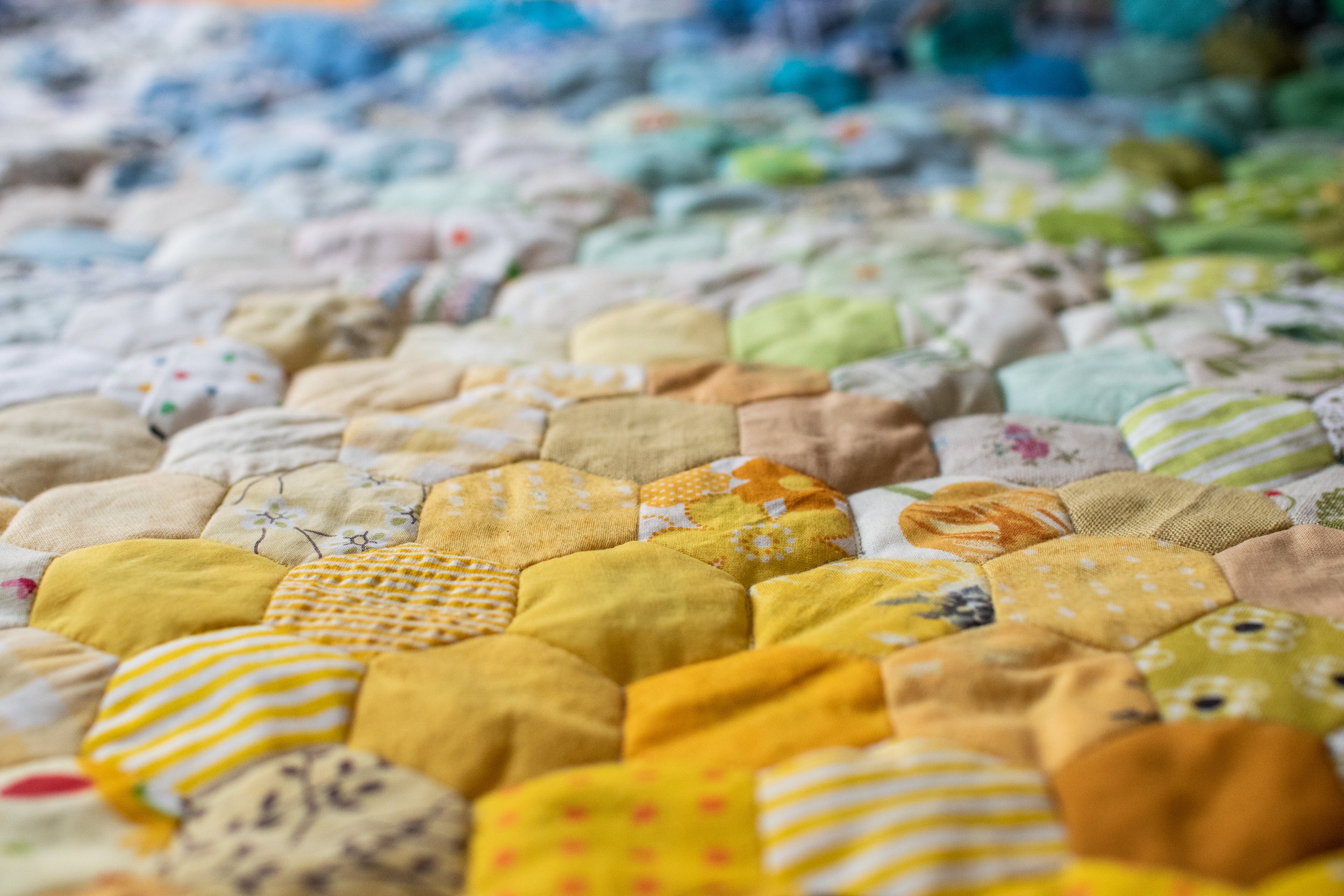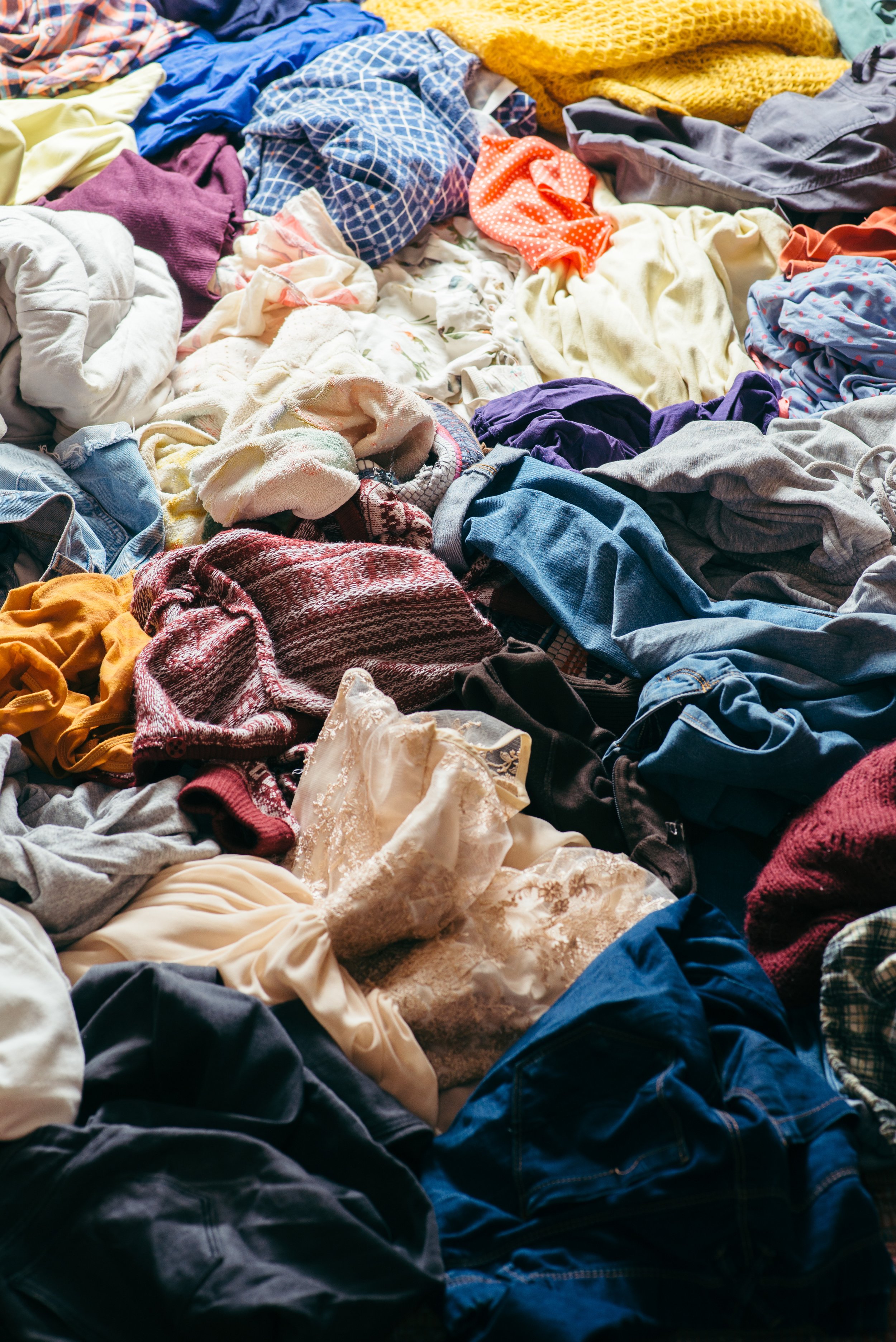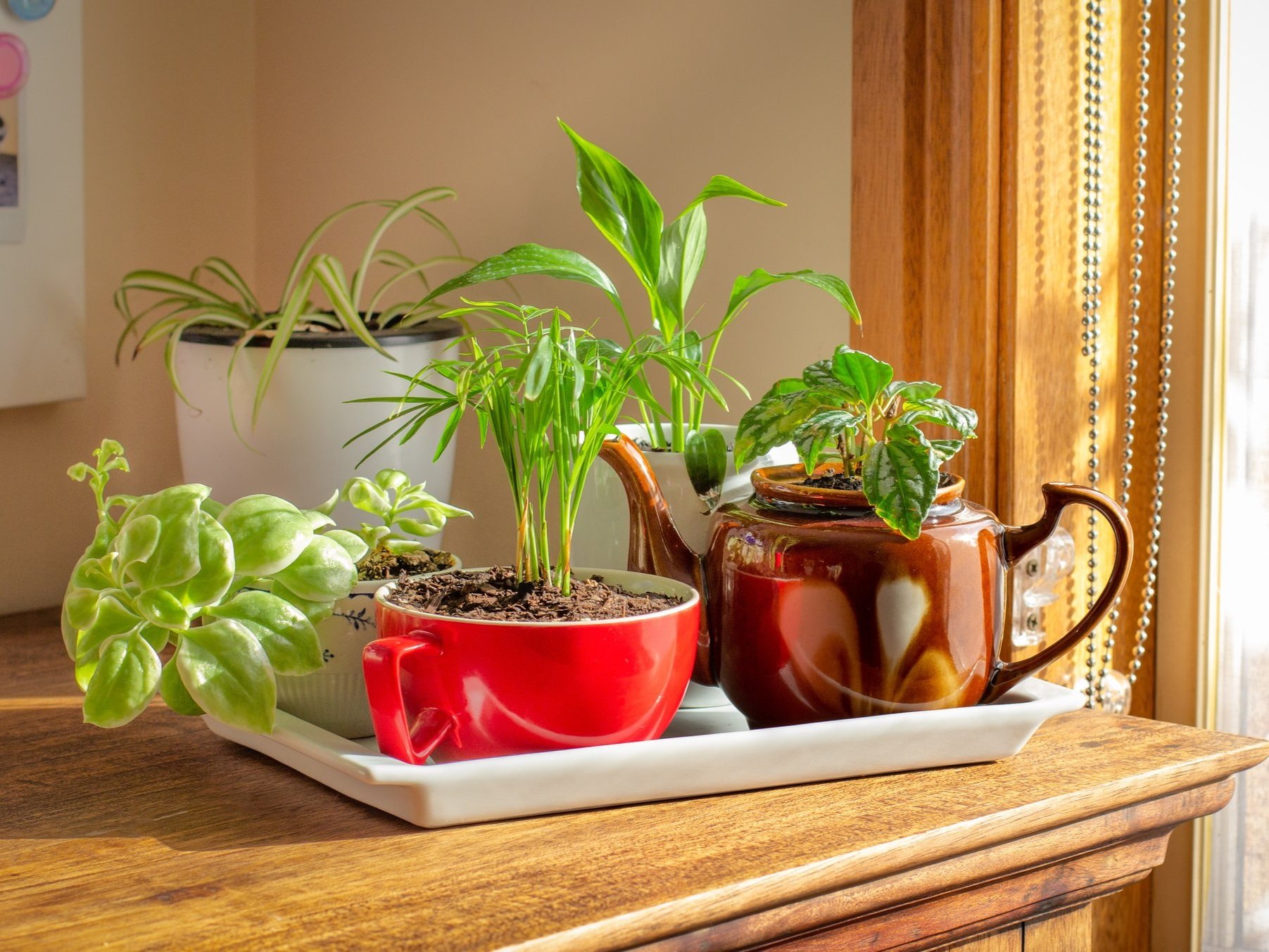Upcycling and the Textile Waste Problem
There is a growing trend within the sustainability community towards upcycling, by taking waste materials and giving them purpose by turning them into something more usable. This is especially prominent with fashion, clothing, and other textile-based items, as they are notorious for producing large amounts of waste, various types of pollution, and being connected to horrible working conditions. In order to prevent more waste & pollution from being created, upcycling materials is one of the best (and craftiest) ways that everyday people can help the environment!
What is Upcycling?
Upcycling is defined as recycling something in a way that the resulting product is of a higher value than the original item, or to create an object of greater value from a discarded object of lesser value (Merriam-Webster). By upcycling and using waste materials, you not only save these items from a landfill, but also avoid the emissions and costs associated with conventional manufacturing.
Upcycling can be anything that takes this waste material and gives it a more significant purpose. While it’s a common term associated with textiles and clothing, it can be applied to almost any form of waste. You can upcycle anything big or small, from furniture to tablecloths to empty jars, even compost is essentially just upcycled food waste!
Why Does Upcycling Matter?
According to a report from the World Economic Forum, the fashion and textile industry is the 3rd largest contributor of emissions around the globe. It accounts for 5% of all emissions produced worldwide, with only the agriculture and construction industries producing more emissions. The industry also creates millions of tons of waste each year during production alone, with more waste coming at a consumer level, after the clothing and textiles have been worn or used.
An astonishing 1.2 billion tonnes of greenhouse gas emissions are produced from textile production annually, as reported by the Ellen MacArthur Foundation. This amount is more than the emissions of all international flights and maritime shipping combined. In 2018 alone, fabric and textile waste in the United States accounted for 7.7% of all materials sent to landfill, weighing out at 11.3 million tons (EPA).
By upcycling carbon footprint-heavy fabrics and other items that have already been manufactured, you’re able to divert the waste from landfill while making the most of the energy already put into them during manufacturing.
The Problem With Recycling Fabric
For many people, the go-to answer for the problem of textile (and other manufacturing waste) is to recycle it. After all, we’re made to think that recycling is the catch-all for waste problems, from fabric to plastics, paper, glass, and metals. Empty and used plastic bottles can just be recycled and made into new bottles, right?
According to National Geographic, only 9% of all plastic that has ever been created has been recycled. Unlike other materials that remain highly durable and usable after recycling, plastics break down and degrade in quality after every use, meaning they cannot be effectively reformed into the same items. These plastics are often downcycled, or reformed into something of lesser value and durability than their previous incarnation. The original plastic bottle cannot be reformed into another plastic bottle, instead being melted down and are often formed into plastic “wood” or other construction materials, even into plastic fabrics.
Similarly with textiles, less than 1% of material used to produce clothing is recycled into new clothing (Ellen MacArthur Foundation). Of the clothing that is able to be recycled, around 13%, is often downcycled for use in lower-value applications, like made into insulation materials and stuffing. Large name brands like Levi’s and Madewell promote their “Denim Recycling Programs”, but these materials aren’t really recycled into new jeans. Instead, they are shredded and donated as housing insulation to non-profits like Habitat for Humanity and other community outreach groups. And while it’s great to be helping these non-profits, the “recycled” jeans and other materials are being downcycled rather than truly recycled.
There are many reasons for the lack of recycling available with post-consumer textiles, one such reason being mixed materials. During manufacturing, materials are often blended together with synthetic materials for a desired feel or stretch (or simply to lower the production costs and increase profits), and more synthetics are used for additional components, like tags, thread, or elastics. A recent search for us to find 100% natural fibre socks took days and days of searching, as essentially every retailer uses either a blend of synthetic and natural materials, polyester threads, or some sort of elastic woven in. And that’s just for socks! From shirts to pants and undergarments, practically everything is made of mixed materials.
When these mixed fabrics are brought back to be recycled, it’s extremely difficult to identify the exact materials used and even harder to separate them out by material to be properly processed without contamination. Additionally, a large amount of “recycled” plastics that are downcycled are turned into synthetic fabrics. While this may seem like a good use for the plastic, the degradation of these materials leads to the increased shedding of harmful microplastic particles that pollute waterways, leading to weaker durability in the synthetic fabrics.
Utilizing Waste Materials
One way to combat the growing textile waste problem is to utilize the still usable “waste” fabrics and materials to create new goods. And while individuals upcycling post-consumer used-clothing and fabrics is great, companies and brands need to start accessing and reworking the scrap materials that they produce.
To do our part in eliminating textile waste, we are excited to announce our newest line of Upcycled products to the Simple Ecology lineup, starting off with our Upcycled Jute Potholders! We have been working hard to design a thoughtful series of household products that utilize the scraps from our Canvas & Jute Tote Bags. There is a huge market for recycled cotton in the textile manufacturing industry, meaning scrap cotton can be collected and sold for reprocessing and manufacturing. This same market doesn’t exist for Jute scraps, which are often sent to landfill. While the scraps may not be valuable for resale, Jute has very low thermal conductivity, making it the perfect material for eco-friendly potholders!
Our Upcycled Jute Potholders are available in 3 different styles to meet all your heat-protectant needs in the kitchen. The large Potholder Trivets can be used to protect countertops and tables from hot pans and dishes, while also functioning as a potholder for taking pans in and out of the oven. The Pan Handle Holders are designed to fit over the long handle of any pot or frying pan, even on sturdy cast iron. Lastly, the Loop Handle Holders are perfect for pots, lids, and the loop handles at the end of frying pans.
DIY Upcycling Ideas
Some ways you can get started upcycling yourself is by re-using any fabric laying around your home. Old worn-out clothing and other non-donatable fabrics can be remade into new pieces of clothing, bags, quilts, and more. As a last resort, use the fabric around your house as rags to clean up spills and messes to replace single-use paper towels. They work especially well for cleaning off muddy feet and paws from kids and pets during the rainy season. Any leftover bits and pieces can be cut up to make stuffing for pillows, pin cushions, stuffed animals, or even dog & cat toys.
For any project that needs more materials, head to your local thrift store to find donated fabric, clothing, or other usable textiles that fit your needs. For small pieces of scrap, look to Etsy or E-bay for retailers that offer a bundle of scrap materials for your next project. Additionally, look into buying deadstock or end-of-bolt fabrics, which are leftovers from other consumers.
For finding new ideas or connecting with a community of other upcyclers, head to the internet. There are tons of videos about DIY upcycling crafts, home renovations, thrift flips, and other projects on Youtube. Check out subreddits or other forums dedicated to upcycling, zero-waste, and more. If you’re looking for materials to be upcycled & repurposed, head to Freecycle, a neighborhood community board for finding used furniture & other items that need a pick-me-up.
If you’re not the DIY-type, you can still support the businesses working to utilize their fabric waste rather than throwing it away. Buying these types of products shows businesses that there is a market for upcycled goods, and can lead more people to hop on the upcycling wagon. Even reaching out to small businesses inquiring about upcycling can go a long way, so don’t be afraid to ask!








